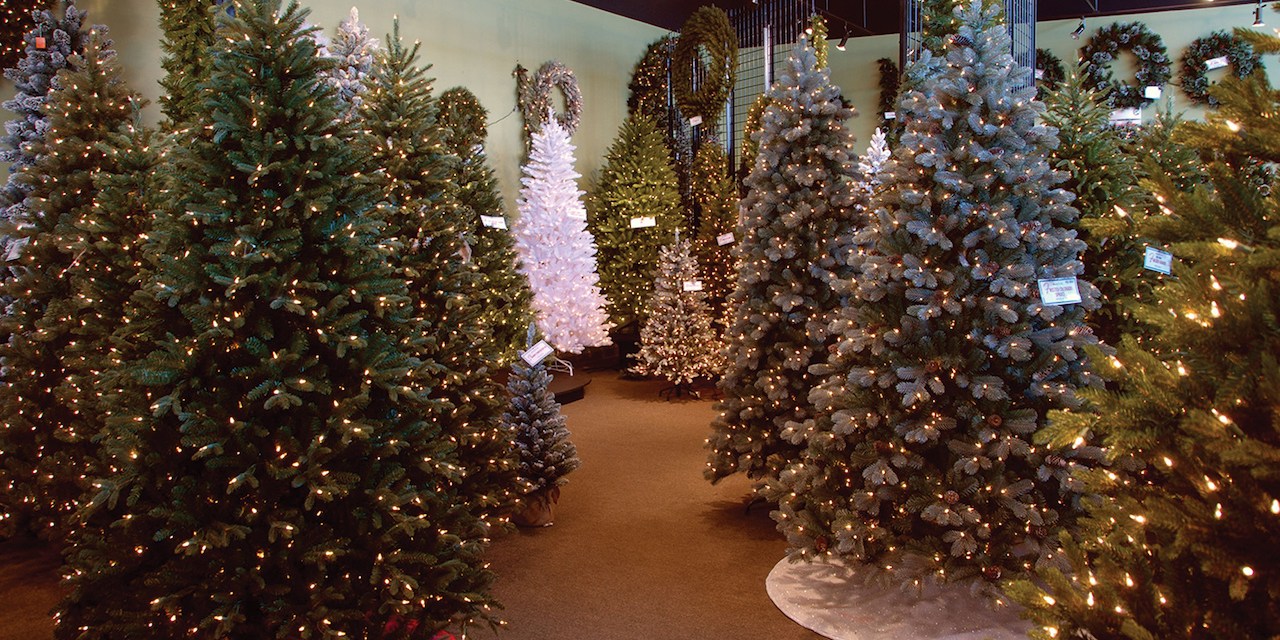Ho-hum holiday: Why Christmas tree sales are flat

Despite the holiday hype, consumer spending on Christmas trees isn’t soaring to new heights.
The National Tree Company, which sells artificial Christmas trees via its website and through stores like Macy’s and Walmart, is finding that sales are flat year over year, CEO Chris Butler told Modern Retail. Meanwhile, extreme weather and a smaller supply of real trees have pushed up prices, deterring some families from going to Christmas tree farms.
Sales of Christmas trees — both real and artificial — took off early in the pandemic as people redirected costs they’d normally spend on trips and dining to home furnishings and decorations. In fact, Christmas tree sales were up 29% in 2020, according to a survey of retailers conducted by Evercore ISI. In 2021, the American Christmas Tree Association estimated that the market for artificial trees in the U.S. stood between $1 billion and $2 billion.
In the last few years, though, Christmas tree sales shrank as consumers started cutting back on discretionary spending. A recent research report by Freedonia Group found that demand for Christmas trees in the U.S. is projected to decline an average of 1.5% annually through 2028.
Some of this dip in demand may be due to inflation. People typically keep their artificial trees for five to six years, and Butler believes that some customers who bought trees during Covid are holding off on buying new ones to save money.
“If you’re living on a budget, which most people are, it’s harder to make discretionary purchases,” he said. “And artificial Christmas trees are a discretionary purchase.”
For those who want a real tree, costs are up this year, too. Christmas trees are going for an average of $80 to $100 apiece compared to $75 in 2023. This increase is due to a number of factors, including a dwindling supply of trees due to droughts and hurricanes, according to the ACTA. Rising costs of labor, fertilizer and fuel can also drive up prices, the ACTA said.
“In 2024, Christmas tree prices continue to rise,” the ACTA said in a FAQ on its website. “In 2023, natural trees cost roughly 10 to 15 percent more than in 2022… As is the case with all consumer goods, consumers should still anticipate slightly higher prices for both real and artificial Christmas trees this holiday season.”
For families with tight budgets, these price increases could mean the difference between buying a new tree or repurposing old decorations. Many consumers are already prepared to decrease their holiday spending this year, Brad Jashinsky, director analyst at Gartner, told Modern Retail. Gartner’s 2024 Consumer Community Survey found that 21% of U.S. consumers plan to spend less during the holidays, largely because of price increases. Only 14% of U.S. consumers plan to spend more.
In addition to price, timing is playing a big role in Christmas tree sales this year. The window between Thanksgiving and Christmas is about a week shorter this year than it was last year, meaning customers have five fewer days to find the best deals. That’s especially difficult for shoppers who live paycheck to paycheck and won’t have an extra week’s pay to help with the cost of a tree, Jashinsky pointed out.
This year’s shortened window also means vendors have less time to convince people to buy a tree. Even if they see a spike in sales from Black Friday and Cyber Monday, Christmas tree sellers have to worry about the calendar.
“The proximity of Thanksgiving [to Christmas] is a determining factor of the volumes that you do on a daily or weekly basis,” Butler said. “When you lose a week… you absolutely lose sales for that.”
Ironically, Butler says the best time to buy an artificial Christmas tree is right after the prior year’s Christmas. That’s when companies like the National Tree Company offer extra deals to clear out inventory, he explained. Butler often sees customers buy Christmas trees months in advance and then hold onto them.
“Post-Christmas and then post-New Year’s, that’s really where we’ll do some good business,” he said. “One year, 60% of Macy’s sales for us were after Christmas, which is kind of amazing.”

